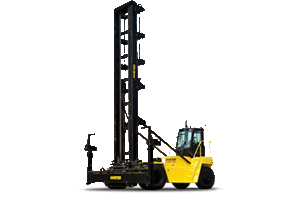Popular Empty Container Handling Forklifts
Our popular empty container forklifts include models with lifting capacities ranging from 5 to 9 tonnes. These machines are specifically designed for efficient handling of empty containers in ports, depots, and logistics centres.
Types of Empty Container Handlers Available
We provide an excellent variety of empty container handlers, including single and double container handlers, top-lift and side-lift spreader models, and electric options. These machines offer versatility and efficiency in empty container handling operations.
About Our Empty Container Handling Forklifts
Adaptalift Group offers an wide selection of premium empty container handlers from the industry’s best manufacturers. Our range can meet the diverse needs of container terminals, intermodal facilities, and large-scale logistics operations. Each empty container forklift in our lineup is equipped with cutting-edge features to enhance productivity, operator comfort, and safety in demanding environments.
Our empty container handlers undergo thorough quality assessments and regular maintenance while we also offer flexible acquisition options, including outright purchase, long-term rentals, and customised leasing plans.
Our team of experts is always on hand to guide you through the selection process, taking into account factors such as lifting capacity, stacking height, and specific operational needs to recommend the ideal empty container handling solution for your business.

